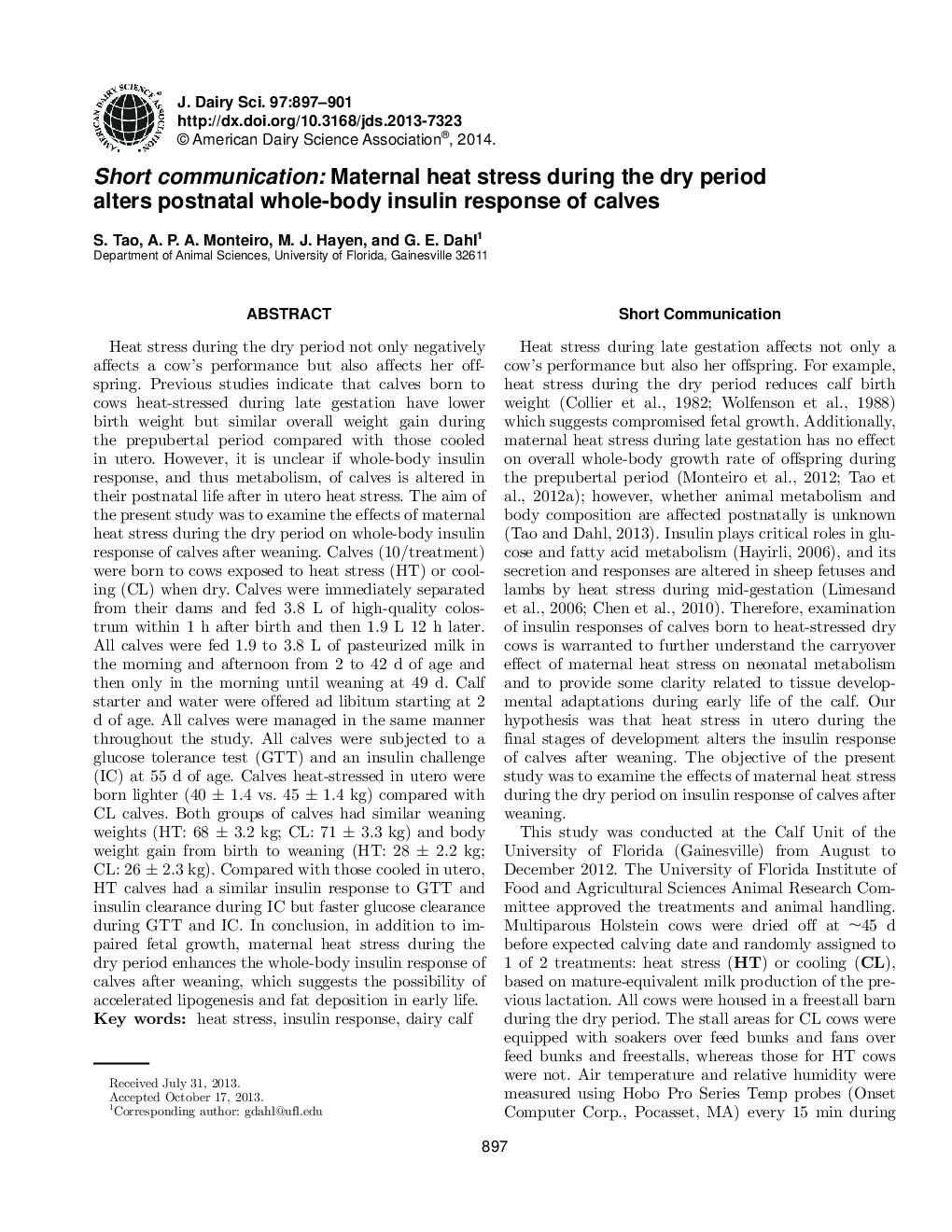| Article ID | Journal | Published Year | Pages | File Type |
|---|---|---|---|---|
| 10977040 | Journal of Dairy Science | 2014 | 5 Pages |
Abstract
Heat stress during the dry period not only negatively affects a cow's performance but also affects her offspring. Previous studies indicate that calves born to cows heat-stressed during late gestation have lower birth weight but similar overall weight gain during the prepubertal period compared with those cooled in utero. However, it is unclear if whole-body insulin response, and thus metabolism, of calves is altered in their postnatal life after in utero heat stress. The aim of the present study was to examine the effects of maternal heat stress during the dry period on whole-body insulin response of calves after weaning. Calves (10/treatment) were born to cows exposed to heat stress (HT) or cooling (CL) when dry. Calves were immediately separated from their dams and fed 3.8 L of high-quality colostrum within 1 h after birth and then 1.9 L 12 h later. All calves were fed 1.9 to 3.8 L of pasteurized milk in the morning and afternoon from 2 to 42 d of age and then only in the morning until weaning at 49 d. Calf starter and water were offered ad libitum starting at 2 d of age. All calves were managed in the same manner throughout the study. All calves were subjected to a glucose tolerance test (GTT) and an insulin challenge (IC) at 55 d of age. Calves heat-stressed in utero were born lighter (40 ± 1.4 vs. 45 ± 1.4 kg) compared with CL calves. Both groups of calves had similar weaning weights (HT: 68 ± 3.2 kg; CL: 71 ± 3.3 kg) and body weight gain from birth to weaning (HT: 28 ± 2.2 kg; CL: 26 ± 2.3 kg). Compared with those cooled in utero, HT calves had a similar insulin response to GTT and insulin clearance during IC but faster glucose clearance during GTT and IC. In conclusion, in addition to impaired fetal growth, maternal heat stress during the dry period enhances the whole-body insulin response of calves after weaning, which suggests the possibility of accelerated lipogenesis and fat deposition in early life.
Related Topics
Life Sciences
Agricultural and Biological Sciences
Animal Science and Zoology
Authors
S. Tao, A.P.A. Monteiro, M.J. Hayen, G.E. Dahl,
